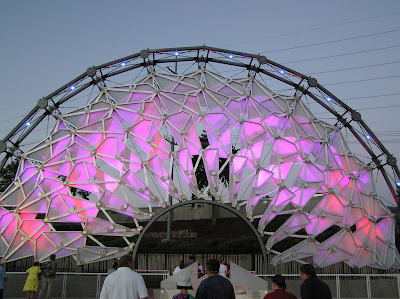The exploration of our first experiment in building precedent studies, and the resulting equations we pulled from these pie charts left us wondering how might these equations be of use to us in informing a new hybrid building typology?????
We were also left questioning how might we parametrically model these ratios, to create buildings that are based on those three precedent forms, and have enlisted the help of academics on campus to help us in answering these questions.
Our journey into equations and mathematics, got us thinking about how mathematics might be better able to inform our architecture, and a way to combat the obsolete or arbitrary. This led us to the idea of geometry, which has been an instrumental and fundamental to architecture since antiquity, as evidenced by the Egyptian pyramids, or Ancient Greece and Ancient Rome. In fact, the notion of geometry defining spaces can also be seen heavily in the Renaissance period, when the circle and the square featured strongly in Church design, and the idea of divine ratios.
 In addition, we began to think about geometry being used in the present, to create architecture, and were inspired by the works of Chuck Hoberman. Chuck's inventions explore transformable kinetic geometries, using deployable structures. His has an extensive website of different explorations he has made, but perhaps his most famous is the Hoberman Sphere, a folding globe that expands into a larger form, in one continuous action, because of its inter-locked geometrical components.
In addition, we began to think about geometry being used in the present, to create architecture, and were inspired by the works of Chuck Hoberman. Chuck's inventions explore transformable kinetic geometries, using deployable structures. His has an extensive website of different explorations he has made, but perhaps his most famous is the Hoberman Sphere, a folding globe that expands into a larger form, in one continuous action, because of its inter-locked geometrical components.The video of this is absolutely captivating;
http://www.hoberman.com/portfolio/pompidou.php?myNum=7&mytext=Expanding+Fabric+Dome&myrollovertext=%3Cu%3EExpanding+Fabric+Dome%3C%2Fu%3E&category=&projectname=Expanding+Fabric+Dome
The important lesson in a geometric expanding structure is the arrangement of a network, where each member has the correct form and geometry. The critical factor is for the kinetic structure to keep its stability, which Hoberman identifies as a 'process' rather than a 'state'.

Hoberman has built several large scale constructions such as the mechanical curtains or arches, for architectural buildings. But he hasn't yet made a kinetically expanding building. However, we thought this could possibly be our new architectural tower form! We could take these ideas of geometry, flexibility and interactive architecture, and explore this in our second experiment. Taking the humble boom-o-ring design, this allows a circular ring to be transformed into a boomerang.




We believe we can transform it into a successful tower building... and will explore the concept of this 'rotating' geometrical tower in a laser-cut experiment. Firstly, we need to get hold of one of these boom-o-rings!!! A trip to toys-r-us is a must for us, how exciting!

No comments:
Post a Comment